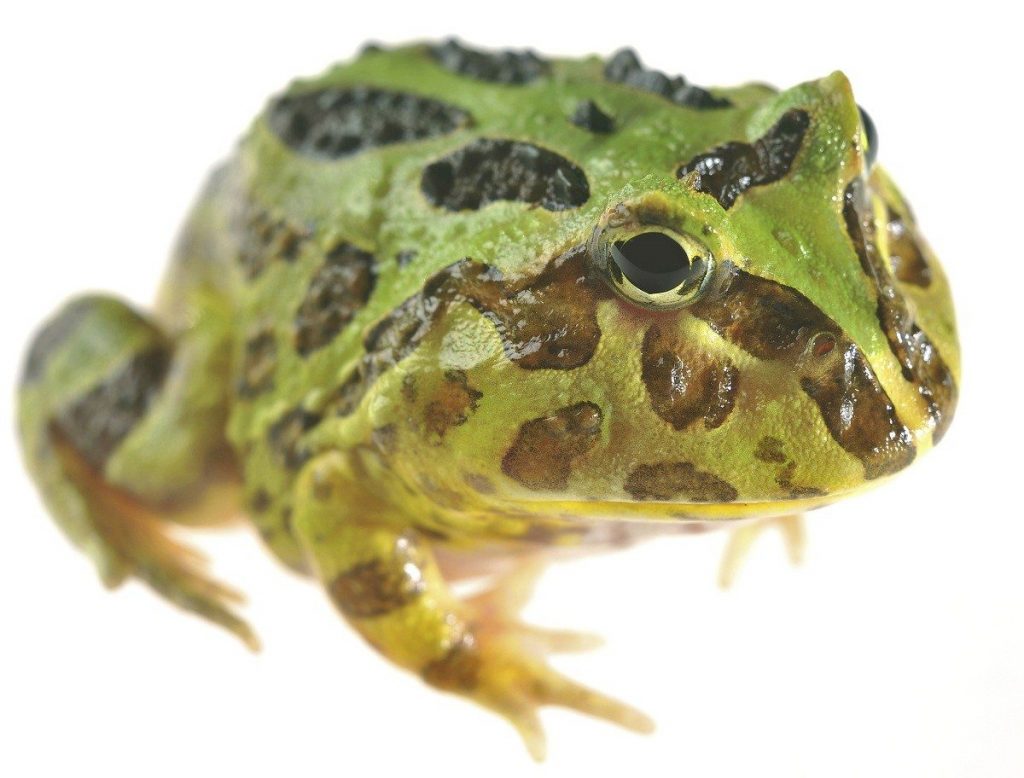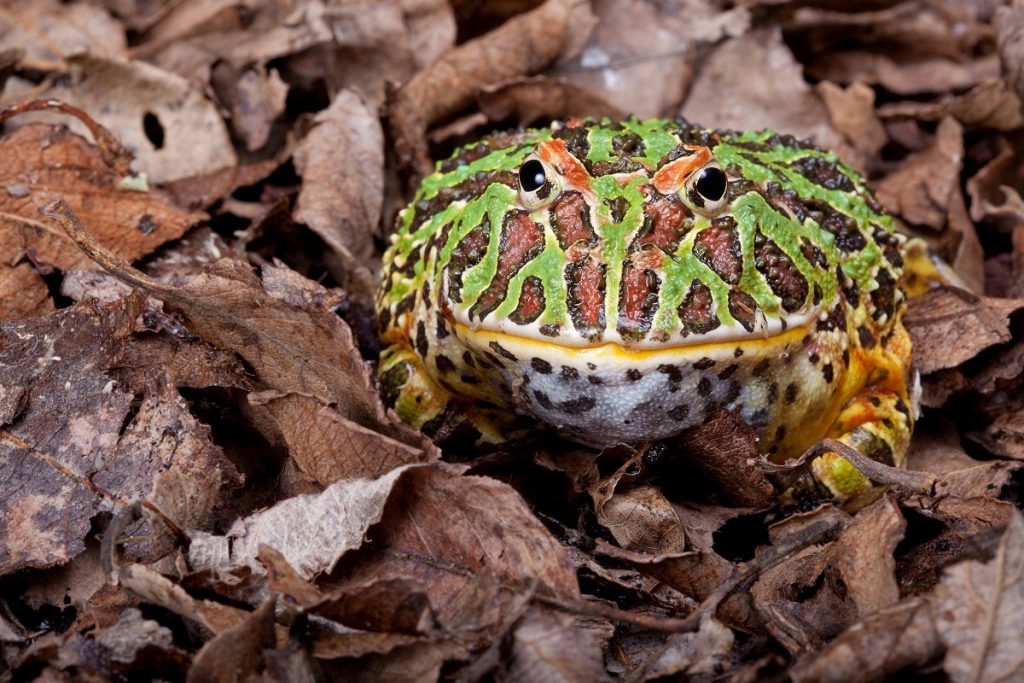PACMAN FROG
(CERATOPHRYS CRANWELLI)
FOR THE MONTH OF FEBRUARY, JUST $14.99, WHILE SUPPLIES LAST.
What characteristics does one desire in a pet? Obviously this is a very subjective question. For some, cute and cuddly top the list. Others seek out strength and the ability to serve as a guardian. There are those that desire beauty, as they want pets that can substitute art. The list can go on and on. Luckily, we have a lot of options. The class of Amphibians alone has recorded over 4,800 species, the majority of which are frogs, and a good number of them are available in the pet trade. We love frogs here at Scales ‘N Tails, and especially enjoy the diversity that exists among them.
It’s fascinating that one small group can contain members that thrive in almost every environment found on the planet. There are frogs living in trees high atop the rainforests, while below them, burrowing frogs are living the majority of their lives happily underground. They are all born in water, but some frogs can’t wait to grow lungs, lose their tail, and venture onto land, yet others are quite content to live their entire lives in the body of water where they were born. All these different types of frogs make great pets for different reasons, however many of them have care requirements that can be difficult. There is at least one species that is perfect for beginners and experts alike, and we are celebrating it this month at Scales ‘N Tails!
THE PACMAN FROG,
The PacMan Frog, specifically Ceratophrys cranwelli as there are a number of different species with this moniker, is a tuff, large, and hardy species native to South America. Their native range includes Argentina, Bolivia, Paraguay, and Brazil. Adults typically grow to a length of 4” to 6”, and can weigh up to a pound! (That’s huge for a frog.) Pacman Frogs are ambush predators and therefore spend the majority of their lives burrowed in the ground, with only their eyes exposed, waiting motionless for their next meal to walk by. Because of this, these frogs require very little space to be happy.
Scales ‘N Tails highly recommends this species to anyone looking for a pet frog, even beginners with little to no experience keeping amphibians. Babies can be kept in small, plastic enclosures, but they grow quickly, so not for long. Pacman Frogs can reach their adult size in under 2 years! However, even full grown adults don’t require much more space than a 10-gallon aquarium provides.
We recommend keeping them on damp, not soaking wet, ground coconut. (We use and recommend Zoo Med’s Eco Earth.) This substrate should be deep enough to allow your frog to burrow deep enough to bury its entire body. It is important to keep the substrate damp, so be sure to mist the tank and substrate regularly with conditioned water to prevent it from drying out. If dry conditions persist, a Pacman Frog will encase itself in a thick outer skin to keep precious moisture in. When the substrate is rehydrated, the frog will break out of this protective layer of skin, and often consume it!
The enclosure should be fitted with a hide spot, (Zoo Med Habba Huts work great,) and a water dish, both of which should be large enough to accommodate the frog’s entire body. Fresh water, treated with Zoo Med’s ReptiClear or a similar Water Conditioner, should be available at all times. Although not a necessity, planting a terrarium plant in the enclosure is a great way to enhance the beauty of the environment, and it will help process waste and produce O2 as an added benefit!
Pacman Frogs are perfectly happy when kept at room temperature, so long as that room is not kept unusually cool or warm, so providing an additional heat source is not always a necessity. They will do best when kept between 70 – 82 degrees Fahrenheit, and Scales ‘N Tails does recommend providing them with a low watt heat matt or bulb. Keeping their environment slightly above room temperature will also ensure your frog maintains a steady appetite. In order to maintain a balanced diet, we recommend providing your frog a variety of different foods. Dubia Roaches or Crickets are both good options for the staple food source, but these should be supplemented with other insects like Wax Worms, Horned Worms, & Earth Worms. Gold Fish and small mice are also good to mix into their diet. Pacman Frogs are gluttons and will overeat if given the opportunity, so you’ll want to make sure not to overfeed. Babies should feed every other day, then scale back to weekly feedings when adult size is reached. The size of the prey items offered depends on the size of the frog being fed.
If you provide the right environment for your Pacman Frog, then you’ll be able to enjoy your pet for a very long time. While they do grow to their adult size quickly, captive animals kept in the proper conditions, can live for 15 years or more!

Finally, we wouldn’t be doing our Animal of the Month justice if we didn’t make it an affordable pet option. So for the month of February, while supplies last, we will have Pacman Frogs available for the unbeatable price of $14.99! These guys typically sell for $25 or more, so if you’re interested in a new pet frog, there has never been a better time to get one!

